The advocacy for accessibility in the built environment has been ongoing for at least twenty years in Malaysia assuming we began from the time the Malaysian Standards MS 1184: Code of Practice for Access for Disabled Persons to Public Buildings and MS 1331: Code of Practice for Access of Disabled Persons Outside Buildings were first drafted.
By-law 34A of the Uniform Building By-Law (UBBL 34A) gazetted separately by the various state governments in the 1990s has done little to change the scenario. UBBL 34A requires that all new buildings provide access for disabled people. Buildings that do not have such facilities when the by-law came into force must provide them within three years.
No doubt new buildings such as shopping complexes have a certain degree of accessibility, these are far and few in between. These buildings by themselves are islands in an ocean of barriers. It is difficult for disabled people to get to these places as there is lack of connectivity in the form of accessible pedestrain facilities and public transport.
One of the excuses given often for lack of accessible facilities is budget. The federal government does not have the budget. The state governments do not have the budget. Municipal governments do not have the budget. To exacerbate the situation, municipal governments who are responsible for the approval of building plans do not have the expertise to ensure that MS 1184 is strictly adhered to.
It is all about money. As long as providing accessible public facilities do not generate revenue, there is little reason for the government to spend money on it. From the way I see it, if the disabled people’s movement in Malaysia continue to advocate the way we are used to, come next fifty years, we will still be complaining about the same issue.
Disabled people need to come out with a fresh angle to advocate. We have evolved from advocating solely for disabled people to embrace a wider circle of people who may find such facilities convenient. These include senior citizens, pregnant women, adults with prams and children. This is a good strategy but obviously is not sufficient to move the powers that be.
Advocates for accessibility should seriously consider promoting the idea of inclusive tourism in Malaysia. Tourism is a major industry in this country. According to Tourism Malaysia, 22 million tourist came to Malaysia in 2008 generating a total receipt of RM49,561.2 million.
Inclusive tourism applies the principles of Universal Design to allow the participation of the broadest range of tourists, principally disabled people. However, other categories of tourists like senior citizens may find this form of tourism convenient due to the accessible facilities.
Accessible tourism will definitely benefit the economy by tapping into groups of tourists who do not usually consider Malaysia as a destination previously due to the barriers that we have here. The facilities in turn will benefit disabled people locally. At the same time, it will also spur dosmetic tourism for disabled people as there are presently limited options in travelling to other countries due to the same issues.
I truly feel that this is a strategy worth looking into. We have not gained much all the years that we have advocated for accessibility. If this does not work, we have nothing much to lose anyway. In fact, the tourism industry in Malaysia as a whole has much to lose as more and more countries around the world move towards making their tourist destinations accessible should the powers that be continue to ignore this matter.

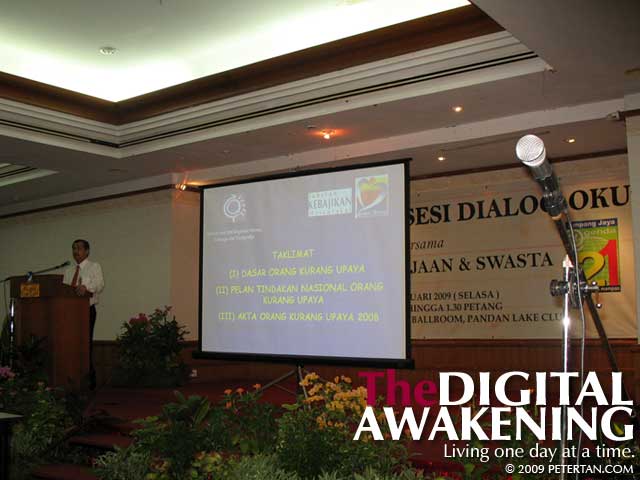
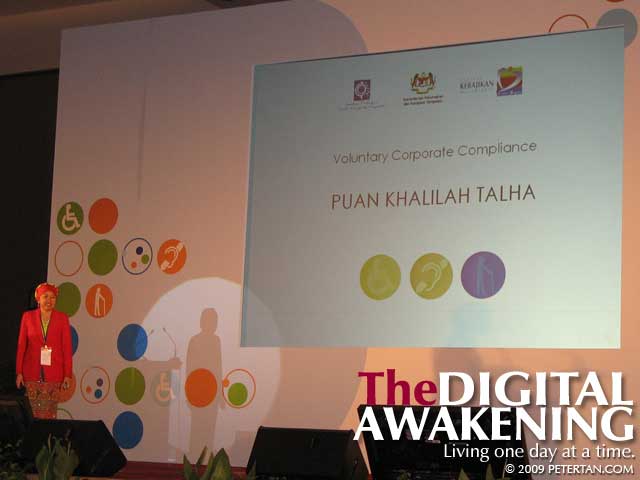
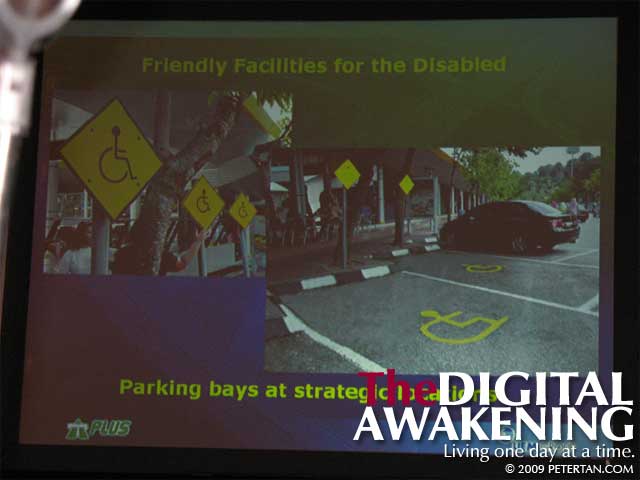
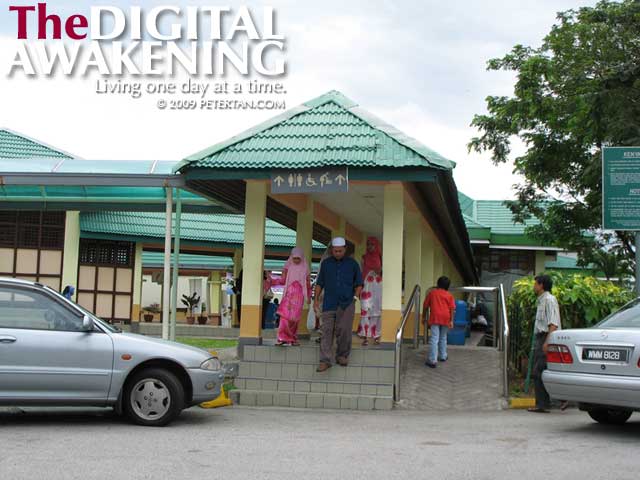
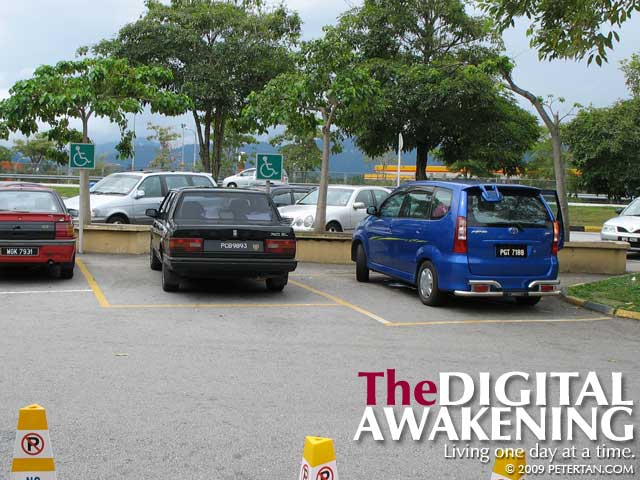
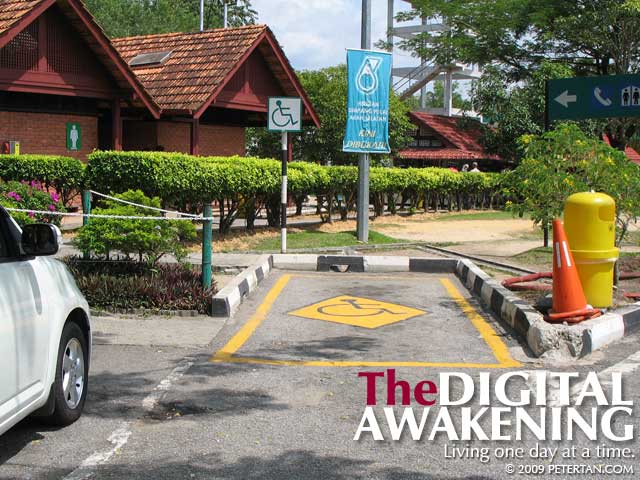
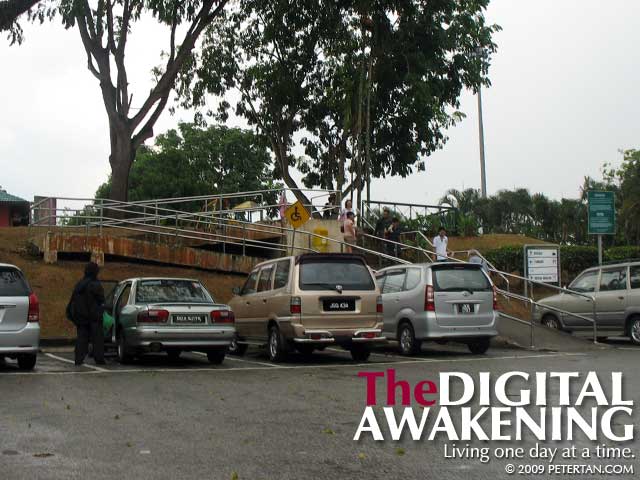 Parking spaces and ramp at Ayer Keroh Rest and Serivce Area southbound.
Parking spaces and ramp at Ayer Keroh Rest and Serivce Area southbound.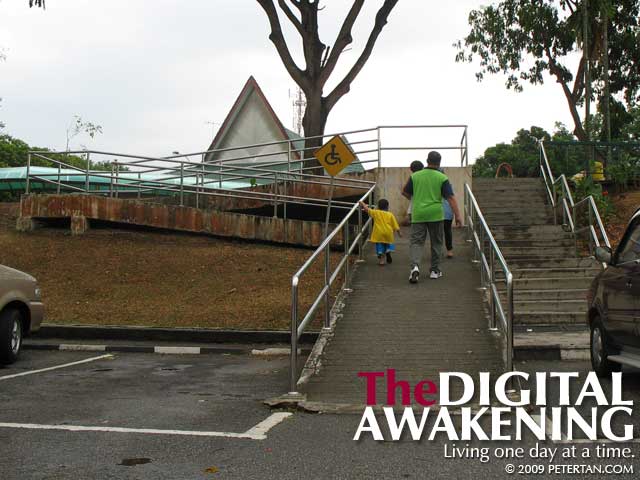 Ramp at Ayer Keroh Rest and Serivce Area southbound.
Ramp at Ayer Keroh Rest and Serivce Area southbound.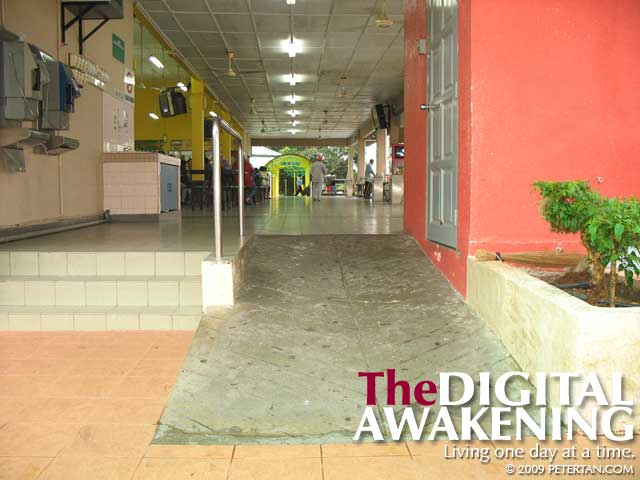 Ramp at Ayer Keroh Rest and Serivce Area food court southbound.
Ramp at Ayer Keroh Rest and Serivce Area food court southbound.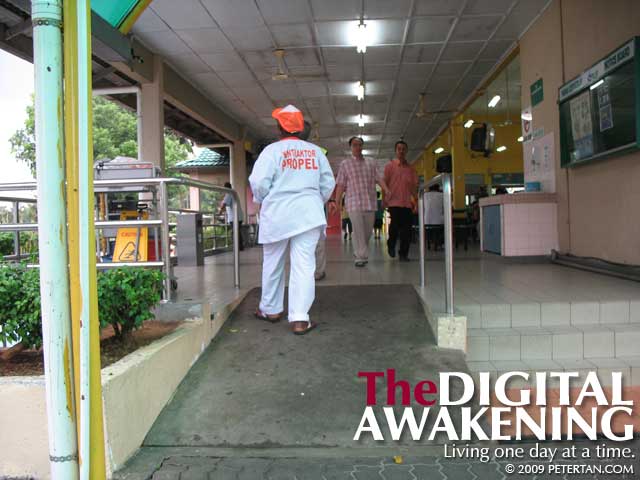 Ramp at Ayer Keroh Rest and Serivce Area food court southbound.
Ramp at Ayer Keroh Rest and Serivce Area food court southbound.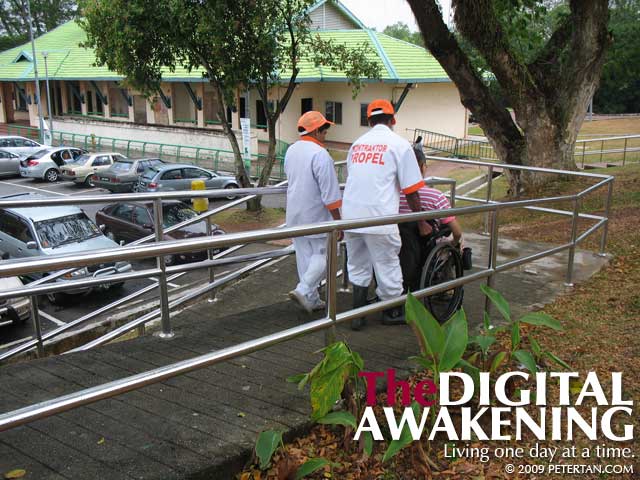 Being helped down the ramp at Ayer Keroh Rest and Service Area.
Being helped down the ramp at Ayer Keroh Rest and Service Area.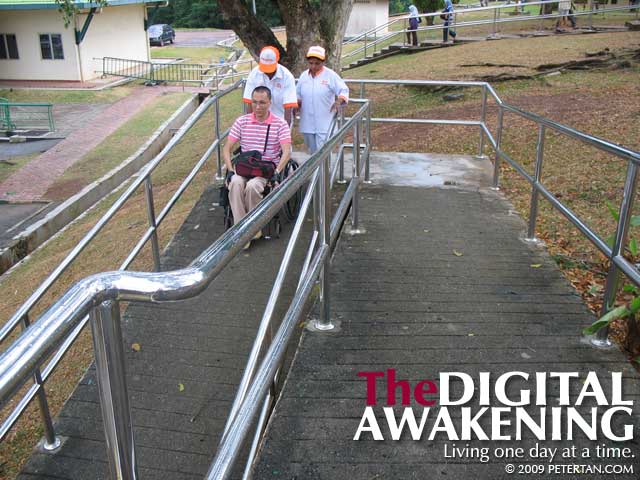 Being helped down the ramp at Ayer Keroh Rest and Service Area.
Being helped down the ramp at Ayer Keroh Rest and Service Area.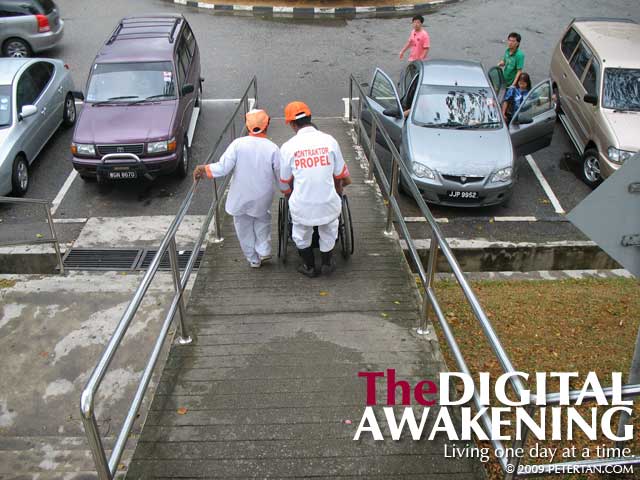 The steepest section of the ramp at Ayer Keroh Rest and Service Area.
The steepest section of the ramp at Ayer Keroh Rest and Service Area.